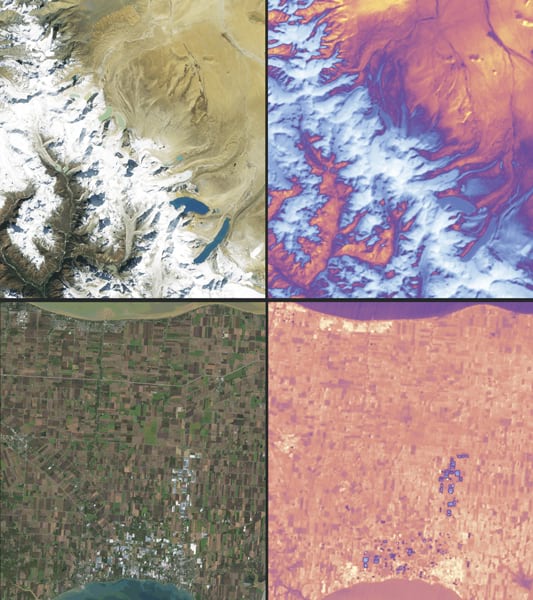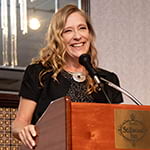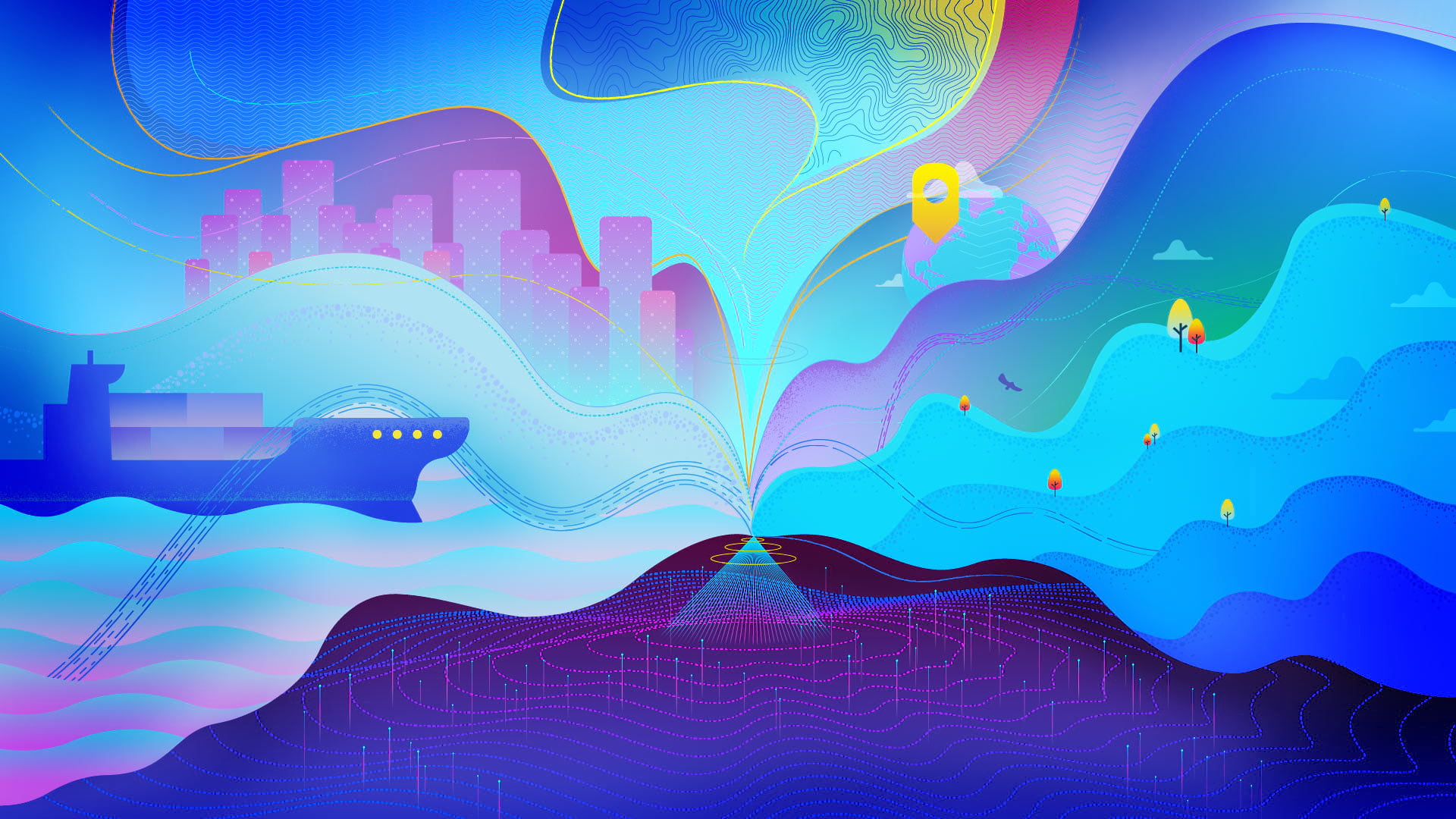GIS, remote sensing, and photogrammetry have long been related fields in the geospatial profession. But throughout their histories, and in terms of both science and technology, these fields have evolved on parallel timelines yet distinctly separate tracks—until now.
It is widely acknowledged that the conceptual origin of GIS was British physician John Snow’s mapping of the cholera epidemic in London in 1854. Just four years later in Paris, Gaspard-Félix Tournachon—more commonly known by his pseudonym, Nadar—became the first person to capture aerial photographs from a hot-air balloon. The National Aeronautics and Space Administration (NASA) launched the first Landsat satellite in 1972, and Esri released the first commercial version of ARC/INFO 10 years later, in 1982.

Throughout the four decades that followed, great strides were made in the geospatial sciences and industry overall. However, the geospatial workforce remained largely divided in separate GIS and remote sensing camps due to incompatibilities in data, analysis methods, and software.
Now at long last, we are seeing these parallel evolutionary tracks converge. On September 27, 2021, in partnership with the United States Geological Survey (USGS), NASA launched Landsat 9 from Vandenberg Space Force Base, ensuring the continuity of a 50-year legacy in land remote sensing. And just a few weeks later, the 2021 Esri Imagery Summit was held a mere 225 miles away in Redlands, California, where attendees learned about new and robust remote sensing data management tools that will forever change the way the GIS community uses Landsat and other remote sensing data.
During the Plenary Session at the Esri Imagery Summit, Richard Cooke, director of imagery and remote sensing at Esri, used a lighthearted holiday dinner analogy to announce the new remote sensing capabilities in ArcGIS. He said that, after decades of being seated at the kids’ table, the remote sensing profession has finally grown up and joined the GIS community at the adults’ table.
In a panel discussion later that day, I challenged the audience to turn that analogy upside down. Perhaps the GIS profession has been seated at the kids’ table while the remote sensing community has been at the adults’ table, watching geospatial technology mature.
For as long as GIS has been growing and developing from its earliest form of attributed points, lines, and polygons, the technology has been fed and nourished by products derived from remotely sensed data. Even before the software was able to display or perform analysis on raster data, many of the fundamental layers used in early GIS were digitized from USGS topographic maps. The data that underpinned the National Spatial Data Infrastructure (NSDI) of the United States—including road centerlines, topography (think contour lines and digital elevation models), hydrography, and building footprints—was collected from aerial photographs. Just as adults select and process food from their table before feeding it to their children, so remote sensing data is systematically processed in a palatable form to ensure that the GIS digestive system (i.e., software and computing systems) and taste buds (i.e., educators and the workforce) are able to ingest it.

The technology demonstrations at the Esri Imagery Summit clearly show that GIS has grown up. Not only is this former kid capable of eating most of the dishes on the adult table, but it has also developed a ravenous appetite. The remote sensing community is now driven to produce enough food on an ongoing basis to feed this hungry new adult. This is good reason to celebrate with the whole family at the big table. The convergence of GIS and remote sensing technologies offers hope for—and a way to help create—a more sustainable future.
I hope this can inspire and motivate all of us. But a few words of guidance—or perhaps even caution—are appropriate. While robust imagery management and analysis tools are now available in ArcGIS, along with application prototypes and tutorials provided by Esri developers, GIS users still need to have a fundamental grasp on the science of remote sensing to be able to apply these technologies correctly. I encourage those who are eager to tap into the rich repository of Landsat imagery that’s now available in the cloud to read Landsat’s Enduring Legacy, from the American Society for Photogrammetry and Remote Sensing (ASPRS), to gain a more complete appreciation of the knowledge and expertise that go into creating useful and accurate analysis products.
I also implore GIS practitioners to make use of the wide variety of education resources that go beyond software tutorials and user manuals. While it is critical that Esri continue to create resources like this, users need to have enough conceptual understanding of the science behind remote sensing to know whether or not they are producing valid results.
Many institutions of higher learning offer degree-granting and certificate programs for people who want to take a deep dive into structured curriculum. AmericaView, a nationwide network of university and public sector experts in remote sensing, provides resources about Earth observation, at no cost, to help people and organizations with applied research, workforce development, and community outreach.

Additionally, since 1934, ASPRS has brought together photogrammetry and remote sensing researchers, educators, and practitioners of all ages and experience levels at conferences and workshops to learn more about different types of image analyses, new data and metadata standards, positional and thematic accuracy assessments, drone mapping, and more. ASPRS is now providing an increasing number of virtual learning options, along with an accredited certification program for anyone who wants to validate their professional qualifications.
As GIS, remote sensing, and photogrammetry continue to evolve—now, more closely together—there are many remote sensing experts who are eager to support their GIS specialist colleagues. GIS users might just need to reach beyond their familiar networks of resources to get connected. In turn, the remote sensing community will be looking for opportunities to meet with the GIS community both virtually and in person at future Esri events.
For more information about ASPRS programs, email office@asprs.org.


